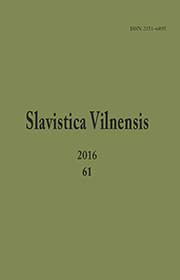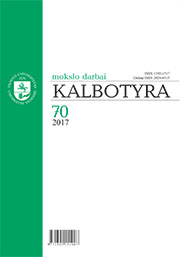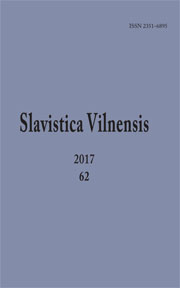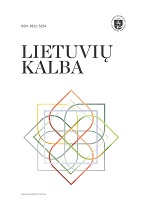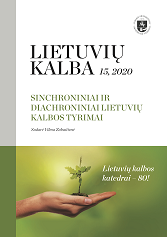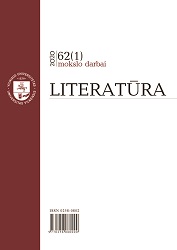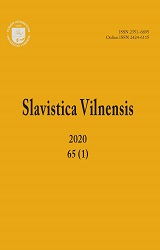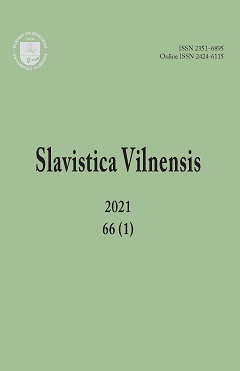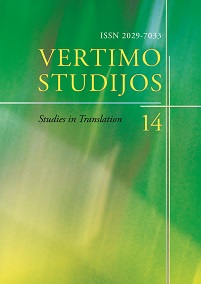Author(s): Jolanta Šinkūnienė,Erika Jasionytė-Mikučionienė,Anna Ruskan,Audronė Šolienė / Language(s): Lithuanian
Issue: 14/2020
The study presents the results of a synchronic and diachronic corpus-based analysis of discourse markers in Lithuanian. The paper aims to analyse patterns of usage and functional diversity of the most frequent discourse markers in contemporary spoken Lithuanian as well as to determine what kind of structural and functional changes occur in the diachronic process of discourse marker formation and what kind of factors foster the emergence of discourse markers. Three major structural groups of the markers were subject to the analysis: (a) particles, (b) adverbs and pronouns, (c) different verbal and nominal forms and their constructions. The data have been drawn from the corpora representing contemporary spoken Lithuanian and from Old Lithuanian texts (the 16th-17th centuries). The corpora of contemporary spoken Lithuanian exhibit a variety of different communication settings: they represent casual interactions between interlocutors who know each other very well, e. g. family members and close friends, or include more formal instances of speech production, e. g. interviews, TV and radio shows. The three corpora used for the synchronic analysis were the following: the sub-corpus of spontaneous private speech of the Spoken Corpus of the Lithuanian Language, compiled at Vytautas Magnus University, the online database of interviews Vilnius Speaking (only the interviews with native speakers of Lithuanian were included) and the Radio and TV Corpus (namely, the period of 1993–2011 was taken into account), compiled by the Department of Sociolinguistics, Institute of the Lithuanian Language. The analysis of the discourse markers in old Lithuanian was mainly based on the 16th-17th century texts, namely Postilė by Jonas Bretkūnas (1591), Postilė by Mikalojus Daukša (1599) and Punktai sakymų by Konstantinas Sirvydas (1629; 1644). In contemporary spoken Lithuanian the discourse markers under analysis have revealed a wide range of textual and interpersonal functions. The textual functions include signaling a conclusion, generalization (i.e. tai ‘so’, vat ‘there, here, so’, reiškia ‘it means’, (vienu) žodžiu) ‘in short’), elaboration, reformulation, word-search (i.e. na ‘well’, nu ‘well’, šita ‘this, so’, tenai(s) ‘there’, ta prasme ‘I mean’), the start of a new topic (i.e. tai ‘so’, na ‘well’, nu ‘well’, va ‘there, here’, žinok ‘you know’), filling a gap in conversation (i.e. šita ‘this, so’, na ‘well’, nu ‘well’) and creating the coherent and smooth flow of discourse (i.e. reiškia ‘it means’, kaip sakant ‘so to say’). The interpersonal functions show reference to shared knowledge and are realized by the markers čia ‘here’, gerai ‘ok’, žinok ‘you know’, ar ne/ane ‘yes or no’, which seek to establish a relationship with the addressee. The speaker may show agreement with the addressee, mitigate his/her statement or avoid providing a straightforward answer. The present study has also revealed a wide range of combinations of discourse markers, such as tai va ‘so here’, tai tada ‘so then’, tada dabar ‘now then’, o tai gerai ‘but so ok’, dabar žiūrėkite ‘now look’, dabar sakyk ‘now say’ expressing textual and interpersonal functions. Functional diversity of the discourse markers may result from their primary lexical or grammatical meaning, position in a sentence, speech act type, co-occurrence with other discourse markers and type of spoken discourse. The study of the 16th-17th century Lithuanian texts shows that common discourse markers in contemporary spoken Lithuanian are most frequently traced back to adverbs (na ‘well’, nu ‘well’, čia ‘here’, ten(ai) ‘there’, dabar ‘now’) and less frequently to pronouns (tai ‘this’). The adverbs examined in the old Lithuanian texts marked textual deixis and, as a result, they may also have acquired metalinguistic or textual functions. The adverbs čia ‘here’ and dabar ‘now’ were used as emphatic particles denoting the author’s subjective stance. Participial constructions containing verbs of speaking (trumpai sakant ‘shortly saying’, prastai kalbant ‘simply speaking’, etc.) were employed as textual markers, i.e. reformulating or paraphrasing the author’s thoughts. The data provide evidence that discourse markers in Lithuanian may have developed from adverbial phrases and complement clauses illustrating the two universal paths of semantic development (cf. Brinton 2017, 285-289). However, the 16th-17th century Lithuanian texts do not contain discourse markers of imperatival origin, such as žinok ‘know’, žiūrėk ‘look’, palauk ‘wait’, eik tu ‘come on’ or discourse markers deriving from the second-person singular or plural forms supranti ‘understand’ (SG), suprantat(e) ‘understand’ (PL) or the third-person form reiškia ‘it means’, as in the old texts these markers had their primary lexical meaning and may have developed discourse functions only in later stages. The particles gi and juk displayed intersubjective functions, as they were employed in contexts of shared knowledge.
More...
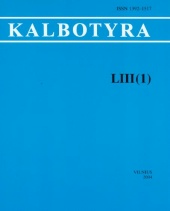

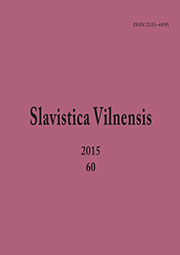
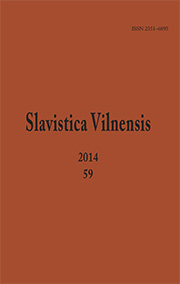
![Новая английская конструкция типа [N [N]] в славянских языках и причины ее отсутсвия в балтийских языках](/api/image/getissuecoverimage?id=picture_2011_28711.jpg)
